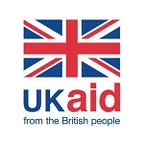Including deaf girls in mainstream education
A teacher’s experience
40 year old Nabweteme Sarah is a teacher at Our Lady of Fatima Primary School, one of the GEC project participating schools. Although she had prior trainings on sign language and that she had been teaching for 8 years, she still had gaps in teaching deaf children. Her participation in the numerous teacher trainings by the project, enhanced her confidence to work with deaf learners due the interested she developed in sign language following the trainings.
“My training in Deaf Education did not expose me to aspects of Inclusive Education Methodologies in the mainstream. Because of this, I still had gaps in teaching all learners with Disabilities. For example I lacked knowledge and skills of Functional assessment, developing accessible teaching and learning materials and other practices in Inclusive Education. These gaps did not allow me to teach well.
“However, my participation in a number of Inclusive Education trainings offered by the project in areas of Sign language, Functional Assessment and Curriculum adaptation and other modules of Inclusive Education has enabled me and other teachers to eliminate the fears around teaching children with disabilities.
As I speak now, the gaps I had are now history. In my school, Deaf Children were taught alone in the school’s Deaf Unit, segregated from other pupils.
“As I speak now, the gaps I had are now history. In my school, Deaf Children were taught alone in the school’s Deaf Unit, segregated from other pupils. I have been able to lobby my school for inclusion. Now the Deaf learners study with other learners in various classes. And of course I can ably teach the learners with disabilities better now. I love my learners and I encourage other teachers to love all learners irrespective of their status.
“I encourage teachers to assess the education needs of each Child with Disability and teach them based on those needs. Teachers should also stop the mentality of thinking that Children with a Disability can only study in special needs. This is an excuse to avoid teaching them. Lastly, I thank Cheshire Services for the training it has provided to the teachers. This is very important as it enables us to teach all children regardless of their abilities.”
More on the Girls’ Education Challenge (GEC)
The Girls’ Education Challenge (GEC) will help up to a million of the world’s poorest girls improve their lives through education and find better ways of getting girls in school and ensuring they receive a quality of education to transform their future.
The GEC was launched in 2012 and will disburse £300 million to 37 individual projects across 18 countries. For detailed information on the GEC programme, see our development tracker.
These projects were selected through an open and transparent process and assessed for their ability to implement new and effective ways to get girls into school, keep them there and make sure they receive a good quality education in ways which are sustainable beyond the GEC funding.
Progress to date — June 2016
Progress to date — June 2016
Leave No Girl Behind
The Leave No Girl Behind (LNGB) window is a new funding window announced in July 2016 under DFID’s Girls’ Education Challenge (GEC). The LNGB window aims to support interventions for highly marginalised, adolescent girls who are out of school (either because they have never attended school or have dropped out without gaining a basic education). You can find more information on our website:
